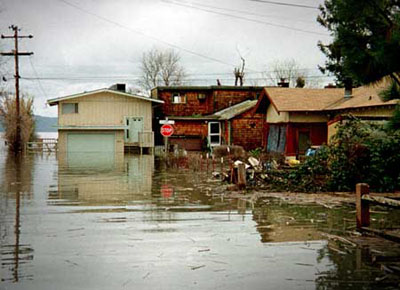This area of Lakeport, California was flooded due to extreme weather during the 1998 El Niño event. El Niño causes changes in rainfall patterns around the world.
Click on image for full size
Courtesy of FEMA
El Niño and Other Climate Events
Sometimes there is a change in the way air moves through parts of the atmosphere. And there are sometimes changes in the way water moves through the ocean too. This disturbs typical weather patterns, or climate, for a few weeks or a few months or a year or more. Weather conditions return to their normal patterns when the atmosphere and ocean return to normal.
These events in the atmosphere and ocean can cause changes in the weather near the disruption and far from it. Changes in the atmosphere in one place that affect weather far away are called teleconnection patterns. Scientists are trying to sort out how this works so that they can better understand and predict weather patterns worldwide.
There are several different events that happen in the atmosphere and oceans. The largest are described below. These events are natural parts of the Earth’s climate. However they might be changing because of global warming.
The El Niño-Southern Oscillation (ENSO) is the strongest natural variation in climate. It is a disruption of the ocean-atmosphere system in the tropical Pacific that causes changes to weather and climate in places around the globe. Both phases of ENSO – El Niño and La Niña – can cause changes in weather including intense rainstorms, drought, and a change in the amount of storms.
Changes in the North Atlantic Oscillation (NAO) cause variability in Northern Hemisphere winter conditions like the amount of snow and cold temperatures. The NAO is closely related to the Arctic Oscillation and is also affected by ENSO.
Last modified September 4, 2008 by Lisa Gardiner.
You might also be interested in:
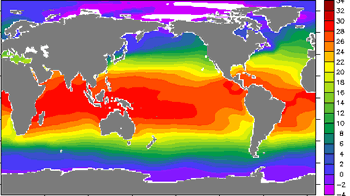
The climate where you live is called regional climate. It is the average weather in a place over more than thirty years. To describe the regional climate of a place, people often tell what the temperatures
...more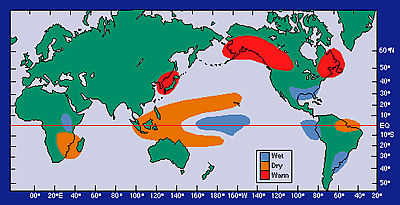
Changes in the atmosphere in one place can affect weather over 1000 miles away. Scientists are trying to sort out how this works so that they can better understand and predict weather patterns worldwide.
...more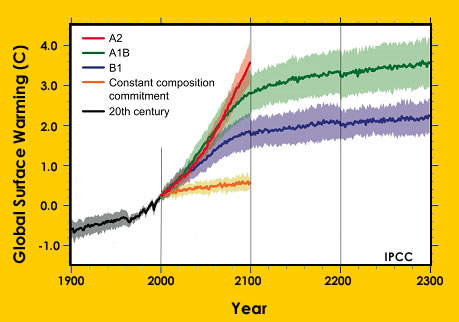
Earth’s climate is warming. During the 20th Century Earth’s average temperature rose 0.6° Celsius (1.1°F). Scientists are finding that the change in temperature has been causing other aspects of our planet
...more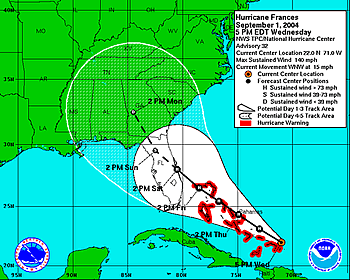
How many hurricanes will form this year? How strong will they be? While no one can say for sure, teams of scientists make predictions each year about the strength of the upcoming hurricane season. To make
...more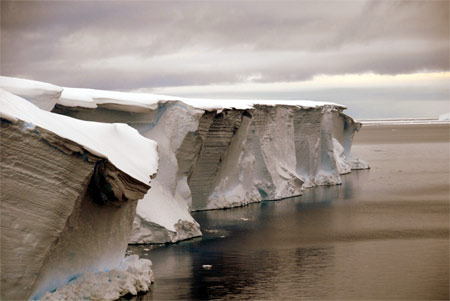
Looking for online content that can be used for a climate change education course or module? Pages linked below can be used to support an introductory climate change education for either a unit or a full
...more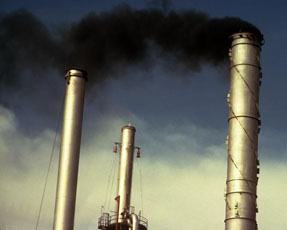
Leaders from 192 countries are meeting in Copenhagen, Denmark December 7-18, 2009 to decide how the world will deal with climate change. They are trying to decide how to limit the amount of greenhouse
...more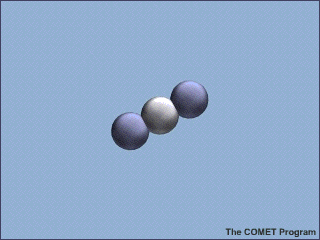
Even though only a tiny amount of the gases in Earth’s atmosphere are greenhouse gases, they have a huge effect on climate. There are several different types of greenhouse gases. The major ones are carbon
...more


